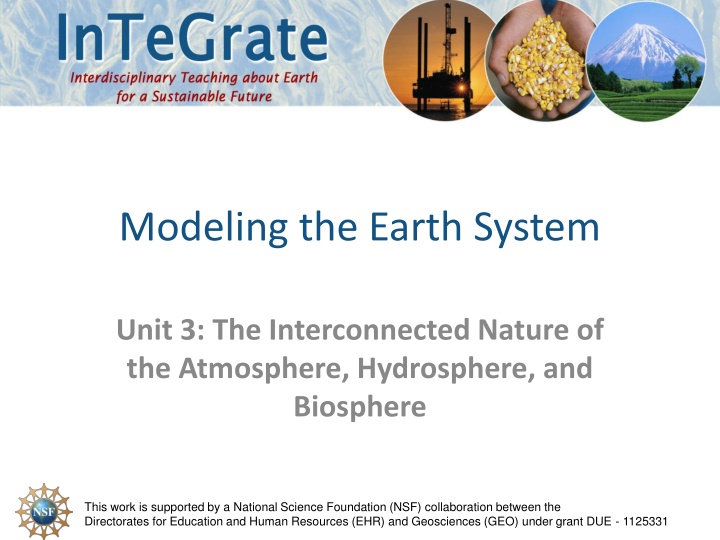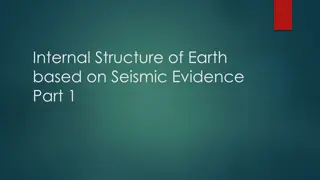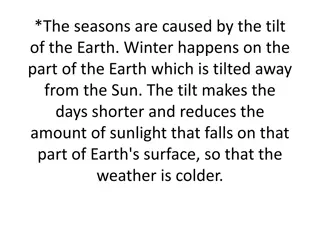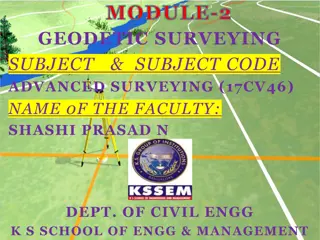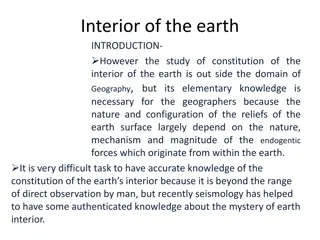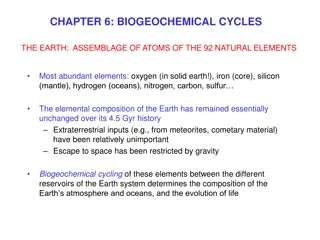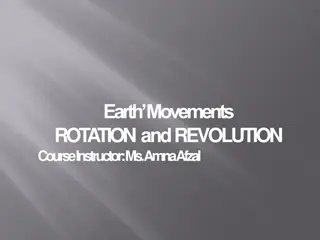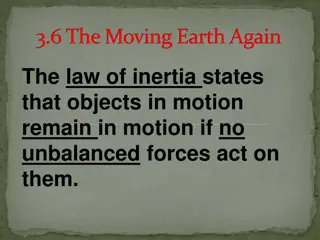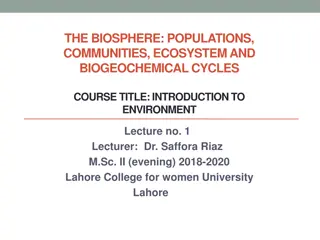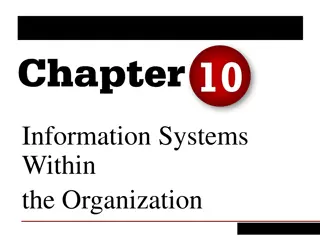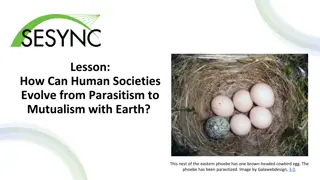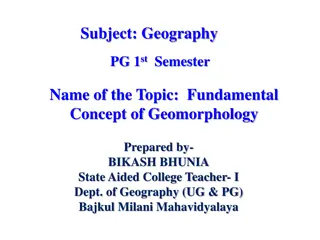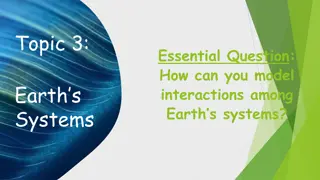Earth's Interconnected Systems
Explore the interconnected nature of Earth's atmosphere, hydrosphere, and biosphere through a study of global carbon cycling and the relationships between these systems. Gain insight into systems thinking, create diagrams illustrating system interactions, and learn how perturbations can impact Earth's systems. Supported by NSF grant collaboration, this unit aims to enhance your understanding of the complexities within our planet's systems.
Uploaded on Sep 27, 2024 | 0 Views
Download Presentation

Please find below an Image/Link to download the presentation.
The content on the website is provided AS IS for your information and personal use only. It may not be sold, licensed, or shared on other websites without obtaining consent from the author.If you encounter any issues during the download, it is possible that the publisher has removed the file from their server.
You are allowed to download the files provided on this website for personal or commercial use, subject to the condition that they are used lawfully. All files are the property of their respective owners.
The content on the website is provided AS IS for your information and personal use only. It may not be sold, licensed, or shared on other websites without obtaining consent from the author.
E N D
Presentation Transcript
Modeling the Earth System Unit 3: The Interconnected Nature of the Atmosphere, Hydrosphere, and Biosphere This work is supported by a National Science Foundation (NSF) collaboration between the Directorates for Education and Human Resources (EHR) and Geosciences (GEO) under grant DUE - 1125331
Learning Goals for this Unit Today you will study global carbon cycling by building and analyzing a model of the interactions between Earth systems. By the end of this class you should be able to: 1. Identify important processes in the global carbon cycle; 2. Discuss how changes in the tundra biome would influence the carbon cycle; 3. Create a systems diagram to illustrate reservoirs, feedbacks, and fluxes within a system composed of the atmosphere, biosphere and permafrost; 4. Modify the systems diagram to account for perturbations in the system resulting from a global catastrophic event.
Outline of the activities A brief introduction to systems thinking Building a system diagram using components and flow arrows Identifying system behaviors Incorporating additional information to extend our system diagram
When we try to pick out anything by itself, we find it is tied to everything else in the universe. John Muir Photo taken in 1906 of John Muir (right) and Theodore Roosevelt on Glacier Point in Yosemite National Park.
What is systems thinking? Systems thinking is the study of complexity and the relationships and interactions among components of a system. It involves trying to understanding the behavior of a complex system by looking at the ways that its component parts interact. Earth is a system made up of interacting components or spheres.
Why use systems thinking? A systems approach allows us to consider how a perturbation in one part of the system can impact another part of the system indirectly.
Model components Reservoir Flux Influence + /- direction of influence The variable name - A controlling variable
Model components Reservoir Where something resides Movement between reservoirs Flux Indicates control or response Influence Indicates faster/slower or more/less + /- direction of influence Variable name - controlling variable A factor in the system that has influence
Book Cycle Library Checkout rate Homes Return rate Bookmobile
Book Cycle New Harry Potter novel + Library Checkout rate Homes Return rate Bookmobile
Our Challenge Although ground temperature increases in permafrost regions are well documented, there is a knowledge gap in the response of permafrost carbon to climate change. - Permafrost Carbon Netowork Our model will integrate permafrost and tundra into the global carbon system so we can explore how they influence the systems response to new climate scenarios.
Carbon Cycle Reservoirs Based on your homework, what are the major reservoirs for carbon on Earth? We are going to consider three system components: atmosphere, vegetation, and permafrost in the tundra biome.
Identify the carbon fluxes between reservoirs Atmosphere (CO2 & methane) Vegetation (living plants) Permafrost (frozen soil & plants)
Fluxes between reservoirs Draw the major fluxes of carbon between reservoirs using thick arrows. Label the process that each flux represents. For example: the flux of carbon dioxide from the atmosphere to plants would be labeled photosynthesis.
Identify the carbon fluxes between reservoirs Atmosphere (CO2 & methane) Vegetation (living plants) photosynthesis Permafrost (frozen soil & plants)
Fluxes between reservoirs Draw the major fluxes of carbon between reservoirs using thick arrows. Label the process that each flux represents. For example: the flux of carbon dioxide from the atmosphere to plants would be labeled photosynthesis. Label the remaining fluxes
Identify the carbon fluxes between reservoirs respiration Atmosphere (CO2 & methane) Vegetation (living plants) photosynthesis Permafrost (frozen soil & plants)
Consider Controlling Variables Identify some potential controlling variables that will influence the fluxes between reservoirs. For example: how will the flux between permafrost and atmosphere be influenced by warming trends?
Consider controlling variables respiration Atmosphere (CO2 & methane) Vegetation (living plants) photosynthesis + Warming Permafrost (frozen soil & plants)
Consider controlling variables Less permafrost + respiration Atmosphere (CO2 & methane) Vegetation (living plants) + photosynthesis + - Warming Warming Permafrost (frozen soil & plants)
Using our system model Now that we understand the parts of our system and how those parts interact with one another, we are ready to analyze the dynamics of the system that is, how it will respond to changes.
Scenario Meteor impact Shading Biomass
